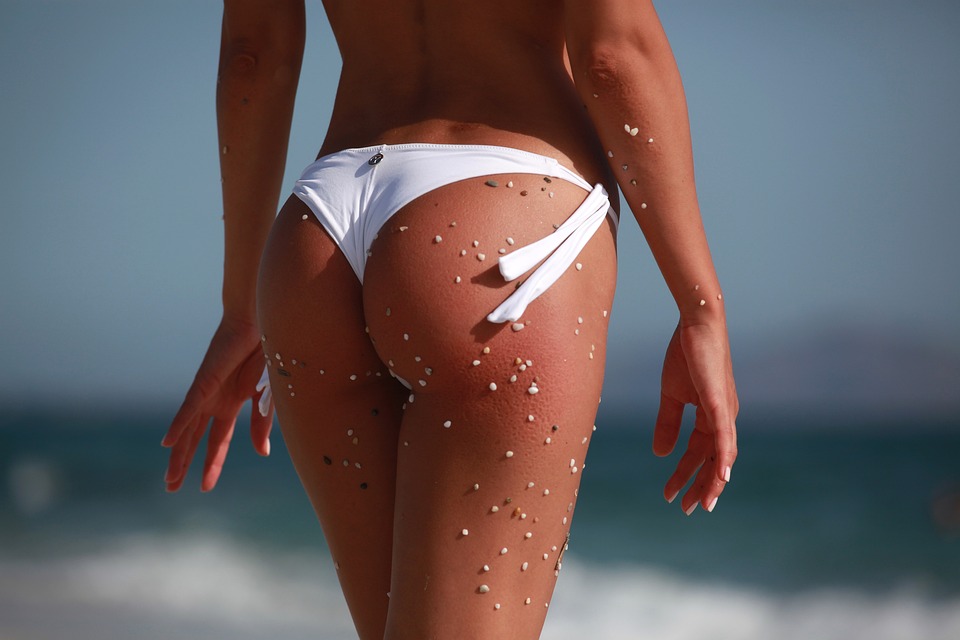The Importance of Temperature in Bikini Waxing: Achieving Optimal Results and Comfort
When it comes to Bikini waxing, one often overlooked factor that can greatly affect the outcome and overall experience is temperature. Many people assume that waxing temperature is a trivial matter, but in reality, it plays a vital role in achieving both desirable results and maximum comfort. In this article, we will delve into the significance of temperature in Bikini waxing, exploring its impact on the waxing process, skin condition, pain level, and overall satisfaction. Let us explore this topic further, uncovering the secrets to a successful Bikini Wax experience.
The Science Behind Wax Temperature
To comprehend the significance of temperature in Bikini waxing, it is essential to understand the science behind it. Wax, whether hot or cold, is composed of various elements that react differently to temperature variations. Hot Wax is typically made from resin and beeswax, while cold Wax is usually composed of a combination of sugar or honey, lemon juice, and water. The melting point of hot Wax is higher than our body temperature, typically ranging from 120 to 160 degrees Fahrenheit (48 to 71 degrees Celsius), while cold Wax does not require heating.
Subheading 1: The Role of Temperature in Wax Consistency
The first aspect to consider when discussing temperature in Bikini waxing is its influence on Wax consistency. Hot Wax, as the name suggests, needs to be heated to a specific temperature before application. When heated correctly, the Wax becomes malleable, allowing it to be spread evenly and thinly on the desired area. This thin layer adheres firmly to the hair, ensuring efficient removal and reducing the chances of breakage. On the other hand, cold Wax, when applied at room temperature, is typically thicker and less pliable. Its consistency may not provide the same level of adherence, potentially leading to less effective hair removal.
Subheading 2: The Impact of Temperature on Skin Condition
Another crucial aspect influenced by temperature is the condition of the skin during waxing. Heat has the ability to open up the pores, making hair removal more effective and less painful. When hot Wax is applied to the skin, it expands the pores, allowing the Wax to penetrate deeper and grip the hair more firmly. This results in a cleaner and longer-lasting Wax. Furthermore, the warmth can also help relax the skin and muscles, minimizing discomfort during the procedure. Conversely, cold Wax does not have the same pore-opening effect, potentially leading to less successful hair removal and increased pain.
Subheading 3: Temperature’s Role in Pain Perception
Pain is often a significant concern when it comes to Bikini waxing. Fortunately, temperature can play a role in mitigating this discomfort. When hot Wax is applied to the skin, it stimulates the nerve endings, causing them to become temporarily desensitized. This phenomenon, coupled with the relaxing effect of warmth, can help reduce the perception of pain. Additionally, the heat from hot Wax can increase blood flow to the area, promoting the release of endorphins, which are natural pain-relieving chemicals produced by the body. In contrast, cold Wax does not provide the same numbing effect, potentially resulting in a more painful experience.
Subheading 4: Achieving Optimal Waxing Temperature
To ensure a successful Bikini waxing experience, it is crucial to achieve the optimal waxing temperature. For hot Wax, it is essential to heat it to the recommended temperature, as stated by the manufacturer. This can be achieved using a Wax warmer or a microwave, following the instructions carefully. It is important to test the temperature of the Wax on a small area of the skin before applying it to the entire Bikini area to avoid burns. Cold Wax, on the other hand, should be kept at room temperature, ensuring it is pliable but not overly sticky.
Subheading 5: Additional Considerations and Conclusion
While temperature is a key factor in achieving a successful Bikini Wax, it is important to consider individual preferences and skin sensitivities. Some individuals may have more sensitive skin that reacts better to either hot or cold Wax. Experimenting with different temperatures and techniques is crucial to finding the optimal approach for each person. Additionally, seeking professional assistance from experienced estheticians is highly recommended, as they possess the expertise to provide personalized advice and ensure a safe and effective waxing experience.
In conclusion, temperature plays a vital role in achieving desirable results and maximum comfort in Bikini waxing. From the consistency of the Wax to the condition of the skin and pain perception, temperature influences various aspects of the waxing process. Understanding the science behind Wax temperature and following proper techniques can lead to a successful and satisfying Bikini waxing experience. So, next time you consider a Bikini Wax, remember the importance of temperature and its impact on achieving optimal results and comfort.
Top Questions Concerning Bikini Wax Temperature
What is the ideal temperature for a Bikini Wax?
The ideal temperature for a Bikini Wax typically ranges between 110 to 125 degrees Fahrenheit or 43 to 52 degrees Celsius. This temperature range ensures that the Wax is warm enough to effectively remove hair, but not so hot that it could cause burns or discomfort to the client.
The three most important pieces of information about the ideal temperature for a Bikini Wax are:
1. The temperature range should be between 110 to 125 degrees Fahrenheit or 43 to 52 degrees Celsius.
2. The Wax should be warm enough to effectively remove hair.
3. The Wax should not be so hot that it could cause burns or discomfort.
Why is temperature important during a Bikini Wax?
Temperature is important during a Bikini Wax because it affects the consistency and effectiveness of the Wax. When the Wax is at the ideal temperature, it becomes soft and pliable, allowing it to adhere to the hair and skin more effectively. This makes the hair removal process smoother and less painful for the client. Additionally, the right temperature helps to minimize the risk of burns or discomfort during the waxing procedure.
The three most important pieces of information about the importance of temperature during a Bikini Wax are:
1. Temperature affects the consistency and effectiveness of the Wax.
2. The ideal temperature makes the hair removal process smoother and less painful.
3. The right temperature minimizes the risk of burns or discomfort.
What can happen if the Wax temperature is too hot?
If the Wax temperature is too hot, it can cause burns or discomfort to the client. Hot Wax can scald the skin, leading to redness, swelling, and even blisters. In extreme cases, it may result in skin damage or infection. It is crucial for estheticians to ensure that the Wax temperature is within the safe range to protect the well-being and comfort of their clients.
The three most important pieces of information about the consequences of using Wax that is too hot are:
1. Hot Wax can cause burns, redness, swelling, and blisters on the skin.
2. Extreme cases of using Wax that is too hot may result in skin damage or infection.
3. Estheticians should prioritize the well-being and comfort of their clients by using Wax within the safe temperature range.
What can happen if the Wax temperature is too cold?
If the Wax temperature is too cold, it may not effectively adhere to the hair and skin, making the hair removal process less efficient. Cold Wax can also cause discomfort and pain to the client, as it may pull on the skin or break the hair instead of removing it from the root. It is important to ensure that the Wax is warmed to the appropriate temperature to achieve optimal results and client satisfaction.
The three most important pieces of information about the consequences of using Wax that is too cold are:
1. Cold Wax may not effectively adhere to the hair and skin, leading to less efficient hair removal.
2. Cold Wax can cause discomfort and pain to the client during the waxing process.
3. Warming the Wax to the appropriate temperature is crucial for optimal results and client satisfaction.
How can estheticians maintain the ideal Wax temperature during a Bikini Wax?
To maintain the ideal Wax temperature during a Bikini Wax, estheticians can use Wax warmers specifically designed for heating Wax to the desired temperature. These devices typically have adjustable temperature controls, allowing the esthetician to set and monitor the Wax temperature accurately. It is important for estheticians to regularly check the Wax temperature throughout the waxing session to ensure it remains within the safe and effective range.
The three most important pieces of information about maintaining the ideal Wax temperature during a Bikini Wax are:
1. Estheticians can use Wax warmers with adjustable temperature controls to heat the Wax to the desired temperature.
2. Regularly checking the Wax temperature throughout the session helps ensure it remains within the safe and effective range.
3. Monitoring the Wax temperature is crucial for providing a successful and comfortable Bikini Wax experience.
1. Bikini Wax temperature must be extremely hot for effective hair removal
Contrary to popular belief, the temperature of the Wax used for a Bikini Wax does not need to be extremely hot in order to effectively remove hair. While it is true that the Wax needs to be heated to a certain temperature to achieve the desired consistency, it does not have to be scalding hot. In fact, using Wax that is too hot can lead to burns and discomfort for the client. It is important for estheticians to find the right balance between heating the Wax enough to make it pliable and spreadable, but not so hot that it causes harm.
2. Cold Wax is not effective for Bikini waxing
Another common misconception is that cold Wax is not effective for Bikini waxing. While hot Wax is commonly used for this type of waxing, cold Wax can also be used with great success. Cold Wax is a pre-made Wax that comes in strips, and it can be applied directly to the skin without the need for heating. It adheres to the hair and can be quickly removed, making it a convenient option for many estheticians. Cold Wax can be a great alternative for clients with sensitive skin or those who prefer a quicker and less messy waxing experience.
3. The higher the temperature, the longer the results will last
Many people believe that the higher the temperature of the Wax used for a Bikini Wax, the longer the results will last. However, the temperature of the Wax does not determine the duration of the hair removal. The effectiveness and longevity of the results depend on various factors, such as the skill of the esthetician, the client’s hair growth cycle, and their individual hair type. While a hotter Wax may make the process more efficient, it does not guarantee longer-lasting results. It is important for clients to understand that regular maintenance is necessary to keep the Bikini area hair-free.
4. Wax temperature does not affect pain levels
Some individuals may believe that the temperature of the Wax used for a Bikini Wax does not affect the level of pain experienced during the procedure. However, the temperature of the Wax can indeed have an impact on the discomfort felt by the client. If the Wax is too hot, it can cause unnecessary pain and even burns. On the other hand, if the Wax is too cold, it may not effectively adhere to the hair and make the removal process more painful. Finding the right temperature for the Wax is crucial for minimizing discomfort during a Bikini Wax.
5. The Wax temperature can be the same for all skin types
Another common misconception is that the temperature of the Wax used for a Bikini Wax can be the same for all skin types. However, each individual’s skin is unique, and what may be a comfortable temperature for one person may be too hot or too cold for another. Estheticians should take into consideration the sensitivity of the client’s skin and adjust the temperature of the Wax accordingly. It is important to prioritize the comfort and safety of the client by using an appropriate Wax temperature that suits their specific needs.
In conclusion, there are several common misconceptions regarding the temperature of the Wax used for a Bikini Wax. The Wax does not need to be extremely hot for effective hair removal, and cold Wax can also be a viable option. The temperature of the Wax does not determine the duration of the hair removal or the pain levels experienced during the procedure. Additionally, the Wax temperature should be adjusted based on the individual’s skin type to ensure a comfortable and safe experience.


